Narrated by photos
An interview that was not done
Jafar Golshan Roughani
Translated by: Fazel Shirzad
2019-3-19
Yannis Behrakis, a well-known news photographer, who worked for Reuters News Agency, died on Saturday March 2, 2019.
He was born in Athens in 1960. He educated in Athens's School of Arts and Technology and received a Bachelor Degree from Middlesex University. In 1985-1986, he was a commercial studio photographer, and while he was working in there, he watched the film "Under Fire" and then he became eager to photograph war.
Then, he began to work with Reuters News Agency in 1987. In late 1988, she was offered a permanent job at the Reuters News Agency Branch in Athens; he accepted it. In January 1989, he have just joined Reuters for four days, and his first foreign mission was to Libya. Since then, as a photographer, he recorded and documented many events in the world. He photographed some events such as the developments in Eastern Europe and the Balkans, the war in Croatia and Bosnia and Kosovo, Chechnya, Sierra Leone, Somalia, Afghanistan, Lebanon, Iraq, Arab Spring in Egypt and Libya and Tunisia, the urban war in Ukraine, the ISIL bombing by NATO forces in Kobani Syria, the financial crisis of Greece and the refugee crisis in 2015 and made the world aware of hidden and obvious aspects. In addition, he covered Kashmir earthquakes, Turkey, Greece and Iran, and photographed four summery Olympics, the American World Cup 1994, and the years of Zionist conflict with Palestinians.
After traveling to Jerusalem[1] as head of the Reuters News agency team along with a group to capture Israeli-Palestinian conflicts in 2008 and 2009, he returned to his homeland in 2010 to cover the financial crisis over his country.
He once miraculously escaped from the Revolutionary United Front Revolt in Sierra Leone in 2000, while American correspondent Kurt Shork, a Spanish journalist, and Miguel Gil Moreno de Mora, a cameraman of Spanish Associated Press TV were killed in the This story. He spent his last years of his life with his daughter, Rebecca, and his son Dmitry and his wife Ellesouth. He suffered from chronic cancer; he died on March 2, 2019.
He hold individual and team fairs in Athens, Thessaloniki, London, Edinburgh, New York, Rome, Barcelona, Madrid, Portugal, France and Dubai, and received numerous awards during his activities. He received the European Fuji Award (Fuji Company) in 1998, 2002 and 2003 as European Photojournalist. He also won the Greek Fuji Prize seven times as a Greek photojournalist. His photography awards consist of Japan Photojournalism Day Award (2016), award from Reuters and Guardian Newspaper in 2015, Department of Publicity Awards from Missouri Journalist School in 2013 and 2015, the Best Prize for Best News Photography for Public News Narrations in 2012, The Annual Award of International Competition of Chinese Press in 2004, 2009, 2013, 2014, 2015 and 2016, the Botsis Prize of Greece was one of his photography awards in 2000. He won the First Prize in Public News Narrations because of his photography in Cousteau from World Press Photo Foundation in Amsterdam, Netherlands.
He came to Iran following the news of Imam Khomeini's death in 1989, and photographed the massive mourning of Iranian people, and left monumental photos.
Now, it should be noted why we did not recognize Behrakis as a photographer of that national mourning of photography in order to understand the significance of the photos of that event to talk with him and hear his memoirs as a person and non-Iranian photographer. Why and how did he come to Iran for this event? How long has he been in Iran? How many photo did he take and what ceremonies did he take photo during day when people said farewell to Imam Khomeini? How did he feel when he saw such an unbeatable funeral in the world? And dozens of other questions.
In the following, you will see two photos of the farewell ceremony of the Iranian people with Imam Khomeini and their funeral, recorded by Yannis Behrakis in June of 1990.
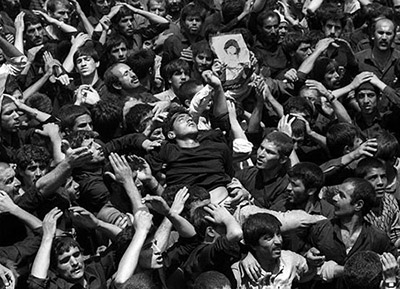
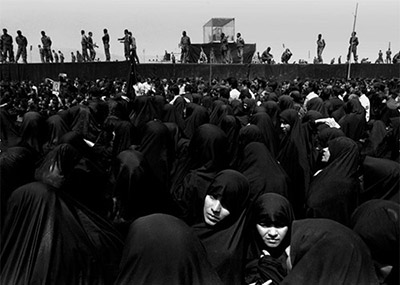
There are also three photos taken by the Greek photographer will be mentioned in the following.
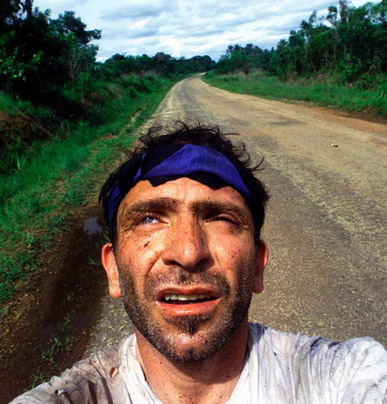
A Salfie photo that Behrakis took it while he was rescuing from an armed group ambush in Sierra Leone.
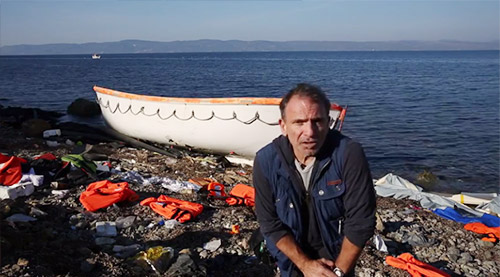
When Behrakis speaks about himself and photography, the video of this speech is available.
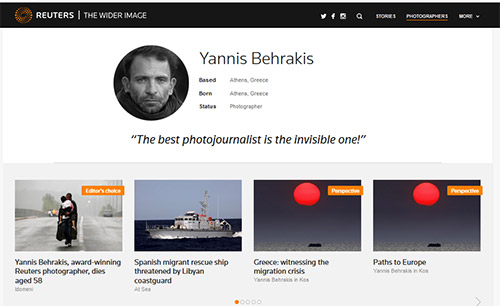
There is a sentence on the page of Yannis Behrakis's photos: "The best photographer is invisible one."
[1] Jerusalem is a city in the Middle East, located on a plateau in the Judaean Mountains between the Mediterranean and the Dead Sea. It is one of the oldest cities in the world, and is considered holy to the three major Abrahamic religions—Judaism, Christianity, and Islam.
Number of Visits: 7736








The latest
- The 368th Night of Remembrance – Part 3
- The Embankment Wounded Shoulders – 14
- An Eternal Lie!
- The 368th Night of Remembrance – Part 2
- Agents in Search for the Fighter
- The Embankment Wounded Shoulders – 13
- The Necessity of Standardizing Oral History and Criticism of General Mohsen Rezaei
- The 368th Night of Remembrance – Part 1
Most visited
- The Necessity of Standardizing Oral History and Criticism of General Mohsen Rezaei
- The 368th Night of Remembrance – Part 1
- The Embankment Wounded Shoulders – 13
- An Eternal Lie!
- Agents in Search for the Fighter
- The 368th Night of Remembrance – Part 2
- The Embankment Wounded Shoulders – 14
- The 368th Night of Remembrance – Part 3
How to send Imam's announcements to Iran
In the first part, the issue of funds, Hajj Sheikh Nasrallah Khalkhali - who represented most of the religious authorities - was also the representative of Imam. In Najaf, there was a money exchange office that cooperated with the money exchange offices in Tehran. Some of the funds were exchanged through him.Operation Beit al-Moqaddas and Liberation of Khorramshahr
After Operation Fat’h al-Mobin, we traveled to Kermanshah and visited Sar-e-Pol-e-Zahab before heading to Ilam. During Operation Beit al-Moqaddas, the 27th Brigade was still receiving support from the West. We maintained contact with individuals who had previously worked in Area 7 and were now leading the brigade. It was through these connections that I learned about Operation Beit al-Moqaddas.Memoirs of Hujjat al-Islam Reza Motalebi
Hujjat al-Islam Reza Motalebi is a cleric from Isfahan. Before the revolution, he was the imam of the Fallah Mosque – which was later renamed Abuzar Mosque. By his presence and efforts, Abuzar Mosque soon became a base for supporters of the Imam and the revolution. After the victory of the revolution, he played a role in uniting forces and maintaining political vitality in southwest Tehran.The Necessity of Receiving Feedback in Oral History
Whenever we engage in a task, we naturally seek ways to evaluate our performance — to correct shortcomings and enhance strengths. Such refinement is only possible through the feedback we receive from others. Consider, for instance, a basketball player whose shots are consistently accurate; should he begin shooting blindfolded, his success rate would rapidly decline, as he would be deprived of essential feedback from each attempt.

